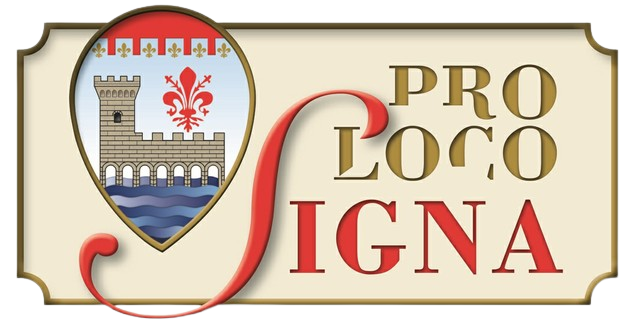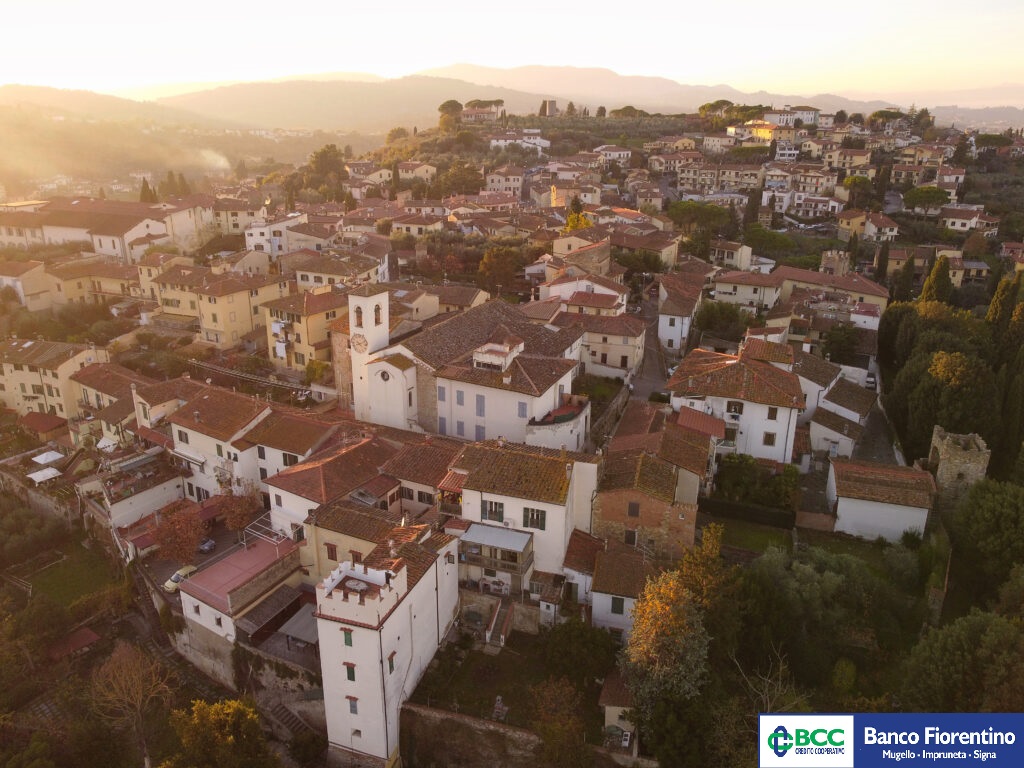
di Angelita Benelli // pubblicato il 31 Maggio, 2020
Il cappello, indispensabile accessorio per una donna di altri tempi, fondamentale per ripararsi la testa dal freddo, dal sole o dalla pioggia, ha una tradizione ultra centenaria in Toscana in particolare Il cappello di paglia di Firenze, già protagonista della commedia di Eugene Labiche del 1851.
Si racconta che nella Toscana del XVI secolo si lavoravano cappelli di paglia di raffinatezza tale da divenire motivo di orgoglio per la stessa corte, tanto che il granduca Cosimo I (1519-1574) usava regalarne ai sovrani d’Europa, intendendo così omaggiarli del migliore prodotto del Regno. Ma è nel 1714, che un certo Domenico Sebastiano Michelacci trasferitosi a Signa da Galeata vicino Forlì, incuriosito dai cappelli intrecciati fatti con steli ricavati dalla battitura del grano dai contadini locali, decise di seminare il frumento al solo scopo di ottenerne paglia per realizzare cappelli.
Ottenne risultati che gli permisero di ricavare steli finissimi tali da realizzare trecce estremamente sottili con le quali poteva confezionare raffinati cappelli, che poi riuscì a vendere anche all’estero, come riporta la lapide presente nella chiesa di San Miniato a Signa, ove fu sepolto, “per primo esportò e vendette all’estero i cappelli di paglia. Morì a Signa il 3 agosto 1739”.
Carlo Lorenzini, meglio conosciuto come Collodi, nel suo “Un romanzo in Vapore”, edito nel 1857, racconta con brio tutto toscano ai primi viaggiatori della strada ferrata che da Firenze porta a Livorno, il viaggio in treno riportando curiosità e tradizioni dei vari paesi costeggiati dalla ferrovia. Arrivato all’industre Signa, Onor del Tosco regno (versi di Marco Lastri), fa una bellissima descrizione della cittadina tutta impegnata sulla lavorazione dei cappelli di paglia, e riprende i suoi abitanti per non aver dato il giusto riconoscimento all’ingegnosità di Michelacci. A tal proposito scrive: “…gli Olandesi inalzarono una statua a colui che trovò il modo di salare e di conservare le aringhe, mi pare che i Signesi, con più ragione, avrebbero dovuto scolpire un mausoleo alla memoria di questo Domenico Michelacci.”
Stessa cosa aveva detto Emanuele Repetti nel suo Dizionario geografico, fisico, storico della Toscana (1843).
Nel 1995, su iniziativa del Gas (Gruppo Archeologico Signese), di alcuni industriali del cappello e alcuni appassionati e con il sostegno dell’amministrazione comunale è stata costituita l’associazione Museo della paglia e dell’intreccio D. Michelacci.
Il Museo dedicato all’industre Signa, inaugurato nel 1997, raccoglie attrezzi per la lavorazione della paglia, paglia antica, trecce, cappelli, foto d’epoca e documenti archivistici, ma soprattutto cappelli. Nel 2017 è stato raggiunto un ulteriore traguardo: il Museo è diventato Museo Civico del Comune di Signa.
Il grano, seminato fittamente perché allungasse cercando la luce, e in solchi poco profondi per poter essere sbarbato facilmente, era il gentil rosso con resta nelle due varietà dette semone e semino, in base alle dimensioni del chicco. I nomi assunti da questa semenza variavano di zona in zona ed il semone era talvolta identificato con il marzuolo, conosciuto fin dal tempo dei Romani.
Per raccoglierlo non si aspettava che giungesse a maturazione, ma lo si sbarbava quando il chicco era ancora da formare ed il culmo parzialmente verde.
Lo si sistemava quindi a mazzi detti mannelli e lo si esponeva al sole per tre giorni intervallati da altrettanti notti per reidratarlo alla guazza.
Con questo procedimento l’evaporazione dell’acqua, rimasta nel culmo appositamente sbarbato e non segato e di quella riassorbita durante la notte, portava via il colore e si otteneva lo sbianchimento.
La paglia assumeva così un caldo colore biondo dorato che la rendeva inimitabile ed apprezzata ovunque in Europa dove veniva anche esportata ancora da lavorare.
Utile per l’intreccio era l’ultimo internodo che si sfilava trattenendo il culmo per liberarlo dalla foglia che lo inguaina fino a distaccarsene nel punto in cui compare la ligula posto intorno alla metà dello stesso internodo.
Una volta sfilati, gli internodi venivano liberati della spiga e, una volta spigati, erano raccolti a mazzetti e destinati all’intreccio. La sfilatura, al rientro dalla scuola, era anche compito delle bambine che così contribuivano all’economia familiare.
Si procedeva poi alla sistemazione in mazzetti scegliendo i fili in base al calibro utilizzando per la selezione l’agguagliatrice. I fattorini acquistavano la paglia dai coltivatori e portavano le manate alle trecciaiole disperse su tutto il contado.
All’epoca del granducato di Toscana con Pietro Leopoldo (1765-1790) tanto era importante questa industria che si diceva che una donna che avesse imparato l’arte dell’intreccio, una trecciaiola poteva andare sposa anche senza la dote perché aveva in mano un mestiere che le dava la possibilità di sostenersi economicamente.
I navicellai che dal Ponte a Signa, nel XVIII secolo, attraverso l’Arno, navigabile appunto con i navicelli (piccole imbarcazioni con il fondo piatto), trasportavano le loro merci da Firenze a Pisa e, attraverso il canale dei Navicelli al porto di Livorno e vendevano, in particolare agli stranieri di origine inglese i cappelli di paglia, detti anche Leghorn hats proprio perché venduti nel porto labronico.
Per oltre duecentocinquanta anni l’industria della paglia è stata tra le attività principali nelle Signe. Varie sono le figure professionali : trecciaiole, fattorini, cappellai… E anche tutto un indotto che si sviluppa attorno: la fabbricazione delle forme di legno o metallo, le falegnamerie per le casse per il trasporto e la spedizione, fiori per guarnire, le tintorie. La stessa stazione ferroviaria viene potenziata per favorire il trasporto delle casse con i cappelli. Divenne così quell’industria la principale tra le attività produttive e manifatturiere del Granducato di Toscana impegnando un terzo della sua superficie coltivabile e circa centocinquantamila addetti remunerati.
Le trecciaiole che dal 1714 fino agli anni Cinquanta del Novecento hanno lavorato in Toscana per consentire la produzione di questi cappelli famosi ovunque sono state centinaia di migliaia ed è grazie alla fantasia ed all’abilità delle più esperte ed intraprendenti che si sono realizzate trecce sempre nuove capaci di determinare il cambiamento del gusto e della moda.
In area fiesolana nel 1828 fu introdotto anche l’uso del telaio, lavorazione importata dalla Svizzera e per questo detta anche «all’uso svizzero», che consentì di proporre sul mercato trecce innovative di grande fantasia ed effetto complementari a quelle fatte a mano.
Alla fine dell’Ottocento la straordinaria organizzazione della produzione impiantata dal Michelacci fu messa in crisi dall’importazione delle trecce già pronte dalla Cina che sul mercato costavano meno del grano da seminare.La crisi fu immediata ed il lavoro, che tanto benessere aveva creato nel vastissimo territorio interessato, mancò all’improvviso, ed i compensi delle trecciaiole furono drasticamente ridotti, provocando la violenta reazione delle donne impegnate a migliaia nell’intreccio della paglia, sia appartenenti alle famiglie dei mezzadri che lavoravano nelle campagne sia abitanti in case d’affitto nei paesi e per questo dette pigionali.
L’alta qualità del lavoro toscano è data ancora oggi dalla bravura delle centinaia di operatori impegnati nelle imprese che danno vita al sistema cappello, anima vera del distretto più importante al mondo per la fabbricazione di questo inimitabile capo di abbigliamento, prodotto precursore del made in Italy.
Tuttora l’arte di fabbricare cappelli è orgogliosamente rappresentata nell’hinterland fiorentino, con aziende importanti.
Per festeggiare i trecento anni dell’industria della paglia, nel 2014 l’associazione Museo della Paglia e dell’Intreccio D. Michelacci fece richiesta di emissione di un francobollo commemorativo. Il Ministero per lo Sviluppo Economico accolse la domanda inserendo l’industria della paglia tra “le Eccellenze del sistema produttivo ed economico.”
VUOI VISITARE IL MUSEO DEL CAPPELLO DI PAGLIA? CLICCA QUI PER ULTERIORI INFORMAZIONI
A HAT MUSEUM IN SIGNA
The hat, an essential accessory for a woman of yesteryear, essential for sheltering her head from the cold, sun or rain, has a tradition of over one hundred years in Tuscany in particular The straw hat of Florence, former protagonist of Eugene Labiche’s comedy 1851. It is said that in Tuscany in the sixteenth century straw hats were worked so refined as to become a source of pride for the court itself, so much so that the Grand Duke Cosimo I (1519-1574) used to give them to the sovereigns of Europe, thus intending to pay homage to them with the best product of the Kingdom. But it was in 1714 that a certain Domenico Sebastiano Michelacci who moved to Signa da Galeata near Forlì, intrigued by the woven hats made with stems obtained from the beating of wheat by local farmers, decided to sow wheat for the sole purpose of obtaining straw to make hats. He obtained results that allowed him to obtain very fine stems such as to create extremely thin braids with which he could make refined hats, which he was then able to sell abroad as well, as reported by the plaque in the church of San Miniato in Signa, where he was buried, “he was the first to export and sell straw hats abroad. He died in Signa on August 3, 1739”. Carlo Lorenzini, better known as Collodi, in his “A novel in steam”, published in 1857, tells the first travelers of the railway that leads from Florence to Livorno with all-Tuscan brio, the journey by train bringing back curiosities and traditions of the various countries bordered by the railway. Arriving at the Signa industry, Onor del Tosco reign (verses by Marco Lastri), gives a beautiful description of the town all engaged in the manufacture of straw hats, and reproaches its inhabitants for not having given due recognition to Michelacci’s ingenuity. In this regard he writes: “… the Dutch erected a statue to the man who found the way to salt and preserve herring, it seems to me that the Signesi, with more reason, should have sculpted a mausoleum in memory of this Domenico Michelacci.” The wheat, sown thickly so that it stretched in search of the light, and in shallow furrows so that it could be easily shaved, was the gentle red with remains in the two varieties called semone and seed, based on the size of the grain. The names assumed by this seed varied from area to area and the semone was sometimes identified with the marzuolo, known since Roman times. To harvest it, it was not expected to reach maturity, but it was shaved when the grain was still to be formed and the culm was partially green. It was then arranged in bunches called mannelli and exposed to the sun for three days interspersed with as many nights to rehydrate it in the dew. With this procedure the evaporation of the water, which remained in the specially shaved and unsawn culm and of that reabsorbed during the night, took away the color and whitening was obtained. The straw thus assumed a warm golden blond color which made it inimitable and appreciated everywhere in Europe where it was also exported still to be worked. The last internode was useful for the interweaving, which was slipped off by holding the culm to free it from the leaf that encases it until it detaches from it at the point where the tongue appears placed around the middle of the same internode. Once pulled out, the internodes were freed from the ear and, once eared, they were gathered in bunches and destined for interweaving. The parade, after returning from school, was also the task of the girls who thus contributed to the family economy. We then proceeded to arrange them in bunches by choosing the threads according to the gauge, using the honing machine for selection. The messengers bought the straw from the farmers and handed the handfuls to the braiders scattered throughout the countryside. At the time of the Grand Duchy of Tuscany with Pietro Leopoldo (1765-1790) this industry was so important that it was said that a woman who had learned the art of weaving, a braider, could get married even without a dowry because she was holding a job that gave her the opportunity to support herself economically The navicellai who from Ponte a Signa, in the 18th century, across the Arno, navigable precisely with the navicelli (small boats with a flat bottom), transported their goods from Florence to Pisa and, through the Navicelli canal to the port of Livorno and they sold straw hats, also known as Leghorn hats precisely because they were sold in the port of Livorno, in particular to foreigners of English origin. For over two hundred and fifty years the straw industry was one of the main activities in Signe. There are various professional figures: weavers, bellboys, hatters… And also a whole related industry that develops around them: the manufacture of wooden or metal forms, the carpentry shops for transport and shipping crates, flowers for garnishing, the dry cleaners. The train station itself is being upgraded to facilitate the transport of crates with hats. Thus that industry became the main production and manufacturing activity in the Grand Duchy of Tuscany, employing a third of its cultivable area and about one hundred and fifty thousand paid workers. The braiders who worked in Tuscany from 1714 until the fifties of the twentieth century to allow the production of these famous hats everywhere numbered hundreds of thousands and it is thanks to the imagination and skill of the most expert and enterprising that ever new braids have been created capable of determining the change of taste and fashion. In the Fiesole area in 1828 the use of the loom was also introduced, a process imported from Switzerland and for this reason also called «Swiss use», which made it possible to offer the market innovative braids of great imagination and effect complementary to those made by hand. At the end of the 19th century the extraordinary organization of production set up by Michelacci was thrown into crisis by the importation of ready-made braids from China which cost less on the market than the grain to be sown. The crisis was immediate and the work which had created so much well-being in vast territory involved, was suddenly missing, and the fees of the braiders were drastically reduced, provoking the violent reaction of thousands of women engaged in the weaving of straw, both belonging to the families of sharecroppers who worked in the countryside and inhabitants of rented houses in the villages and for this reason they are called renters. The high quality of Tuscan work is still given today by the skill of the hundreds of operators involved in the companies that give life to the hat system, the true soul of the most important district in the world for the manufacture of this inimitable garment, a precursor product of the made in Italy. The art of making hats is still proudly represented in the Florentine hinterland, with important companies. To celebrate three hundred years of the straw industry, in 2014 the D. Michelacci Museum of Straw and Weaving association requested the issue of a commemorative stamp. The Ministry for Economic Development accepted the request by including the straw industry among “the Excellencies of the productive and economic system.”
DO YOU WANT TO VISIT THE STRAW HAT MUSEUM? CLICK HERE FOR MORE INFORMATION

